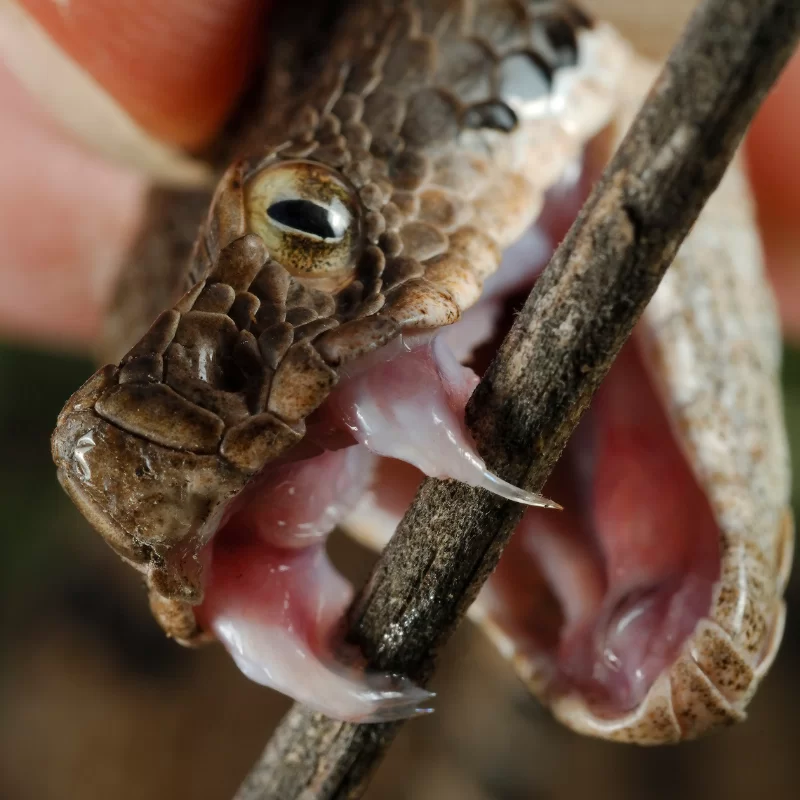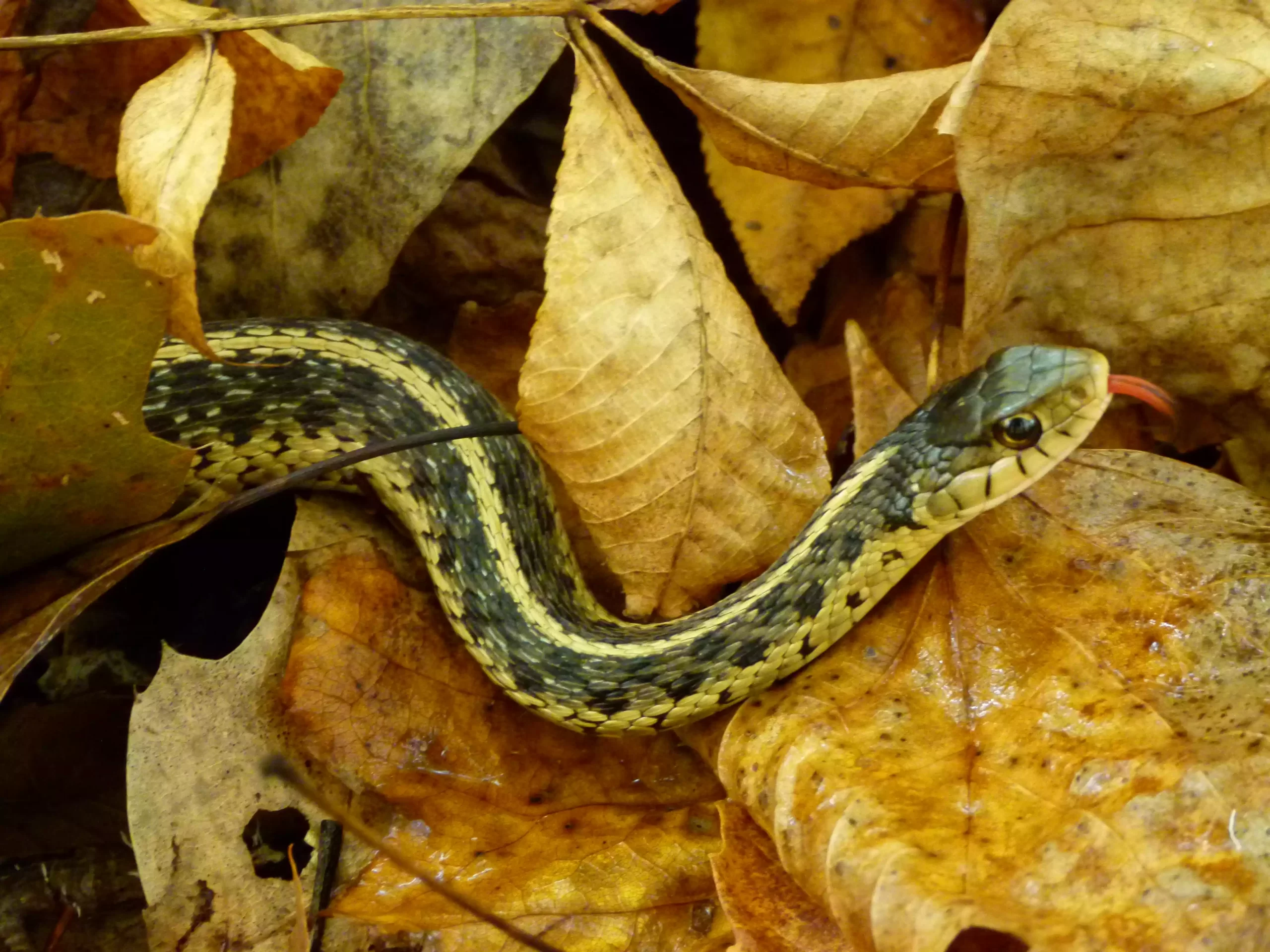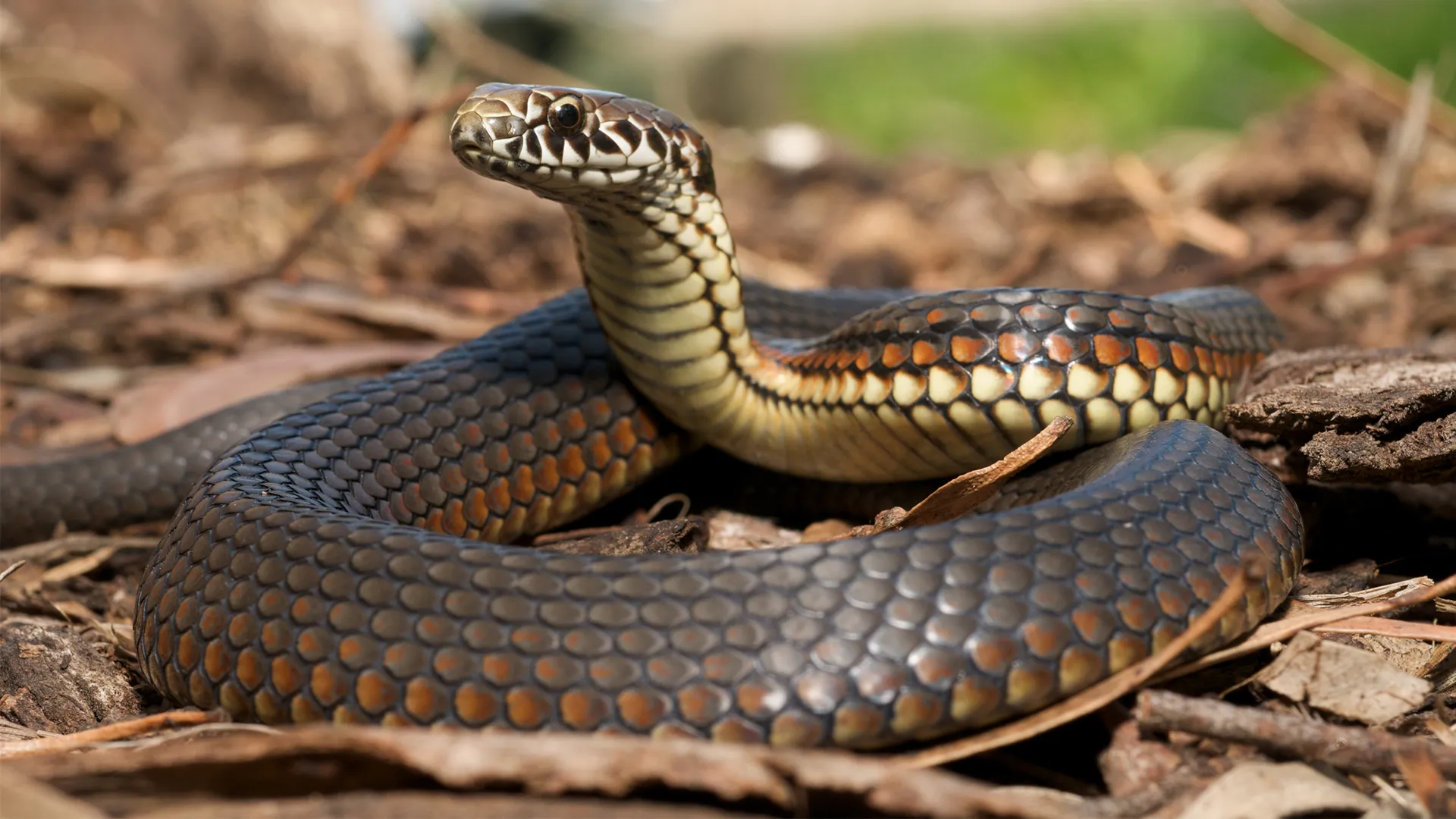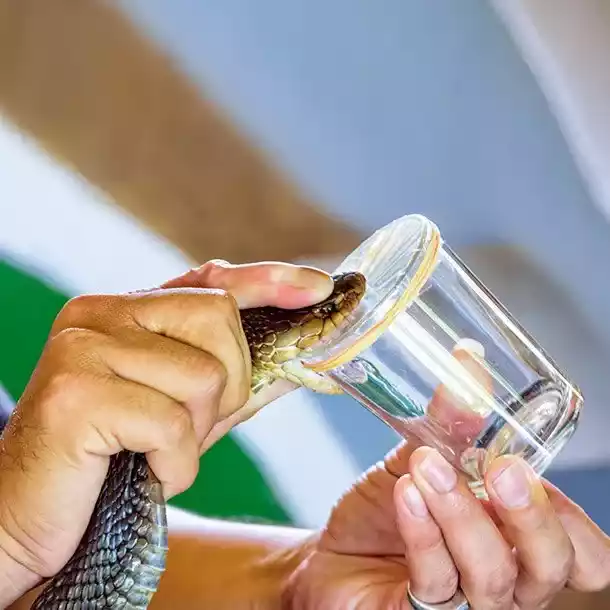Venomous and nonvenomous snakes are fascinating and diverse groups of reptiles that have adapted to various environments around the world. Venomous snakes, such as cobras, vipers, and rattlesnakes, are equipped with specialized venom glands and fangs, which they use to immobilize prey and defend themselves. Their venom can have different effects, ranging from neurotoxic to hemotoxic.
On the other hand, nonvenomous snakes, like pythons, boas, and garter snakes, rely on constriction or simple predation without venom to catch their prey. These snakes are often harmless to humans and play crucial roles in their ecosystems by controlling pest populations. Both venomous and nonvenomous snakes are essential for maintaining ecological balance and are subjects of interest and study in herpetology.
Venomous Snakes
Venomous snakes are a subset of reptiles that possess specialized glands capable of producing venom, a toxic substance used primarily for immobilization and digestion of prey, and as a defense mechanism against predators. These snakes are equipped with various methods of venom delivery, most commonly through fangs that inject venom into their prey or aggressors.

The composition of snake venom can vary greatly among species, often containing a complex mixture of proteins, enzymes, and other molecules that can cause a range of effects, from paralysis to blood coagulation disorders. Venomous snakes are found in diverse habitats around the world and include species like cobras, vipers, rattlesnakes, and sea snakes. Their ability to produce and deliver venom makes them both fascinating subjects of study in biology and important considerations in human-wildlife interactions.
Characteristics of Venomous Snakes
Venomous snakes possess several distinctive characteristics that can help in their identification and understanding:
- Venom Glands and Delivery Systems: Venomous snakes are equipped with specialized venom glands, typically located behind the eyes, and a delivery system that includes modified teeth, such as hollow or grooved fangs. These fangs inject venom into their prey or aggressor.
- Fang Structure: The fangs of venomous snakes can be either fixed or hinged. Vipers, for example, have long, hinged fangs that fold back when not in use, while cobras have shorter, fixed fangs.
- Head Shape: Many venomous snakes have a distinctive head shape. Vipers and many pit vipers, for instance, often have a triangular or arrowhead-shaped head. This is due to the presence of the venom glands, which can give the head a more pronounced, angular appearance.
- Eye Pupils: The pupils of many venomous snakes, particularly pit vipers, are often elliptical, similar to a cat’s eye, in contrast to the round pupils of many nonvenomous snakes.
- Pit Organs: Pit vipers, a subfamily of vipers, have a unique sensory organ known as a pit organ located between the eye and nostril on either side of the head. These organs detect infrared radiation, allowing the snake to sense the heat from warm-blooded prey.
- Color and Patterns: While not a definitive method of identification, many venomous snakes display distinct color patterns that serve as camouflage or warning signals. For example, the coral snake has a well-known color pattern of red, yellow, and black bands.
- Behavior: Venomous snakes may exhibit certain defensive behaviors such as hissing, hooding (in cobras), and rattling (in rattlesnakes) when threatened. However, behavior can be variable and not a reliable indicator of venom potential.
- Scale Arrangement: In some regions, scale arrangement under the tail can help distinguish between venomous and nonvenomous species. For example, rattlesnakes have a single row of scales under their tail, while many nonvenomous snakes have a double row.
Types of Venomous Snakes
Venomous snakes are classified into several families, each containing numerous species with unique characteristics and adaptations. Here are some of the main types:
- Viperidae (Vipers and Pit Vipers):
-
- Vipers: Found worldwide, they are known for their long, hinged fangs. Examples include the European adder and the puff adder.
- Pit Vipers: These snakes have heat-sensing pit organs. Examples include rattlesnakes, copperheads, and cottonmouths (water moccasins) in North America, and the Asian lance-headed vipers.
- Elapidae (Cobras, Mambas, Kraits, and Coral Snakes):
-
- Cobras: Famous for their hood and include species like the king cobra and the Indian cobra.
- Mambas: Extremely fast and agile, found in Africa; the black mamba is well-known.
- Kraits: Mostly found in Asia, known for highly toxic venom.
- Coral Snakes: Found in North and South America, they have distinctive red, yellow, and black banding.
- Hydrophiidae (Sea Snakes):
-
- Found in the Indian and Pacific Oceans, these snakes are adapted to a fully aquatic life. They have paddle-like tails and are generally not aggressive but have potent venom.
- Atractaspididae (Mole Vipers or Stiletto Snakes):
-
- These snakes are found in Africa and the Middle East. They have a unique fang structure that allows them to stab sideways.
- Colubridae (Some Venomous Colubrids):
-
- This is the largest snake family and includes many nonvenomous species. Some colubrids like the boomslang and the twig snake are venomous. Their venom delivery system is less effective compared to vipers and elapids, but they can be dangerous.
Nonvenomous Snakes
Nonvenomous snakes are reptiles that do not possess venom glands and therefore cannot inject venom. These snakes typically subdue their prey through constriction, where they wrap their bodies around the prey and tighten their coils to suffocate it, or by simply overpowering it through biting and swallowing. Nonvenomous snakes are found in various habitats across the world and include a wide range of species, such as pythons, boas, and corn snakes.

Unlike their venomous counterparts, nonvenomous snakes pose little to no threat to humans in terms of venomous bites. Some nonvenomous snakes can still be aggressive if threatened and may inflict painful bites. They play vital roles in their ecosystems, primarily in controlling rodents and other small animal populations. Their diverse sizes, behaviors, and adaptations make them a significant and interesting group in the study of reptiles and wildlife.
Characteristics of Nonvenomous Snakes
Nonvenomous snakes, which make up the majority of snake species, exhibit a variety of characteristics that distinguish them from their venomous counterparts:
- Lack of Venom Glands: Nonvenomous snakes do not possess venom glands and cannot therefore inject venom.
- Teeth Structure: Unlike venomous snakes, nonvenomous species typically have teeth that are solid and not specialized for venom delivery. They may have a large number of small, sharp teeth that are used to grasp and hold prey.
- Head Shape: Nonvenomous snakes often have a more rounded head shape compared to the triangular heads seen in many venomous species. However, this is not a universal trait, as some nonvenomous snakes can have angular heads.
- Eye Pupils: The pupils of most nonvenomous snakes are round, although this can vary with some species having elliptical pupils, making it an unreliable method for determining venom potential.
- Constriction: Many nonvenomous snakes, such as boas and pythons, are constrictors. They kill their prey by wrapping their bodies around it and squeezing tightly, a method not used by venomous snakes.
- Color and Patterns: Nonvenomous snakes display a wide range of colors and patterns. While some mimic venomous snakes for defensive purposes, most nonvenomous snakes have patterns and colors that blend into their natural environment.
- Behavior: Nonvenomous snakes may exhibit a variety of defensive behaviors when threatened, such as fleeing, flattening their body, or playing dead. They may also bite if provoked but without the risk of venom injection.
- Scale Arrangement: In some regions and species, the scale arrangement can help in identification. For instance, many nonvenomous snakes in North America have a double row of scales under their tails, in contrast to the single row often found in venomous species.
- Size and Body Shape: Nonvenomous snakes come in a wide range of sizes and body shapes, from the slender garter snake to the thick-bodied python.
Types of Nonvenomous Snakes
Nonvenomous snakes, which constitute a significant majority of snake species worldwide, come in a wide variety of types, each adapted to specific environments and lifestyles. Here are some notable types:
- Colubridae (Colubrids):
-
- This is the largest snake family and includes a vast majority of nonvenomous species. Examples include the common garter snake, corn snake, and rat snake.
- Colubrids are found in a wide range of habitats and are known for their diverse sizes, colors, and behaviors.
- Boidae (Boas and Pythons):
-
- Boas: Found in the Americas, Madagascar, and some Pacific Islands, boas include species like the boa constrictor and the anaconda.
- Pythons: Native to Africa, Asia, and Australia, pythons are known for species like the reticulated python and the ball python.
- Pythonidae (Pythons):
-
- Similar to boas, pythons are constrictors and are known for their large size. They are found in Africa, Asia, and Australia. Examples include the Burmese python and the royal python (ball python).
- Elapidae (Some Nonvenomous Elapids):
-
- Although this family primarily includes venomous snakes like cobras and mambas, it also contains some nonvenomous species, like the Australian python.
- Lamprophiidae (House Snakes and Relatives):
-
- Mostly found in Africa, they include species like the brownhouse snake. These snakes are known for their adaptability to different environments.
- Natricidae (Water Snakes and Relatives):
-
- Includes water-loving species like the North American water snakes and Asian keelbacks. They are often found near water bodies and are efficient swimmers.
- Uropeltidae (Shield-tailed Snakes):
-
- Found in India and Sri Lanka, these snakes are burrowers with short, stout bodies and unique, shield-shaped tails.
- Xenopeltidae (Sunbeam Snakes):
-
- Known for their iridescent scales, sunbeam snakes are found in Southeast Asia. They have a sleek appearance and are known for their burrowing behavior.
Importance of understanding their differences
Understanding the differences between venomous and nonvenomous snakes is important for several reasons:
-
- Safety and Public Health: Knowledge of which snakes are venomous is crucial for outdoor enthusiasts, travelers, and people living in snake-inhabited areas. Being able to identify venomous snakes can prevent unnecessary fear and reduce the likelihood of harmful encounters. In the event of a snakebite, this knowledge is vital for medical professionals to administer the correct treatment.
- Conservation and Ecology: Recognizing the ecological roles of different snake species, whether venomous or nonvenomous, helps in the conservation of biodiversity. Each species plays a unique role in controlling pest populations and maintaining the balance in food webs.
- Scientific Research: Understanding the differences aids researchers in studying snake venom, which has medical and pharmaceutical applications. For example, snake venom components have been used in developing drugs for conditions like hypertension and chronic pain.
- Education and Awareness: Educating the public about these differences helps dispel myths and reduce the unwarranted killing of snakes, many of which are harmless and beneficial to the environment. It fosters a more respectful and informed attitude towards wildlife.
- Pet Ownership: For those interested in keeping snakes as pets, it is crucial to understand the differences to ensure the safety of the owner and the well-being of the snake. Nonvenomous snakes are generally more suitable and manageable as pets.
- Agriculture and Pest Control: Nonvenomous snakes are natural pest controllers, especially in agricultural settings where they can help manage rodent populations. Understanding and preserving nonvenomous snake populations can be beneficial for farmers.
Understanding the differences between venomous and nonvenomous snakes enhances safety, promotes conservation, aids in medical advancements, and contributes to a healthier ecosystem.
Comparison Table of Venomous and Nonvenomous Snakes
Here’s a comparison table highlighting key differences between venomous and nonvenomous snakes:
| Aspect | Venomous Snakes | Nonvenomous Snakes |
| Venom Glands | Possess specialized venom glands | Do not have venom glands |
| Method of Subduing Prey | Use venom to immobilize or kill prey | Use constriction or simple predation |
| Fangs | Often have hollow or grooved fangs for venom delivery | Typically have solid teeth without grooves |
| Habitats | Found in various habitats globally | Found in diverse habitats worldwide |
| Threat to Humans | Can be dangerous due to venom | Generally harmless in terms of venom |
| Examples | Cobras, vipers, rattlesnakes, sea snakes | Pythons, boas, garter snakes, corn snakes |
| Role in Ecosystem | Control prey populations, sometimes top predators | Control rodent and small animal populations |
| Interaction with Prey | Bite and inject venom | Grab, bite, and sometimes constrict prey |
This table offers a basic comparison, there is significant variation within each category, and some exceptions may apply. For instance, some nonvenomous snakes can mimic venomous ones in appearance for defense.
Impact of Snakes on Local Ecosystems

Snakes, both venomous and nonvenomous, play crucial and diverse roles in local ecosystems, significantly impacting ecological balance in several ways:
- Pest Control: Snakes are natural predators of rodents, insects, and other small animals. By controlling these populations, they help prevent overpopulation and the spread of diseases, which can be beneficial for human agriculture and health. This pest control role is especially vital in agricultural ecosystems.
- Prey for Other Species: Snakes themselves are a source of food for a variety of predators, including birds of prey, larger mammals, and even other snakes. This makes them an integral part of the food web.
- Indicators of Environmental Health: Snakes are often considered indicator species. Their presence and health can reflect the state of the local ecosystem. Changes in snake populations can signal environmental changes or problems, such as habitat loss or pollution.
- Biodiversity Maintenance: Snakes contribute to biodiversity. Each species has evolved unique adaptations to survive in specific environments, adding to the ecological complexity and resilience of these systems.
- Soil Fertility and Structure: Burrowing snakes, like some python and boa species, contribute to soil health. Their movement through the soil can aid in aeration and nutrient distribution.
- Balancing Prey Populations: Snakes help to maintain a balance in the populations of their prey species. This regulation is crucial for preventing the overgrazing of vegetation by herbivorous animals, thereby preserving plant biodiversity.
- Cultural and Ecotourism Value: Snakes can be a source of fascination and cultural significance. In some regions, they attract ecotourism, contributing to local economies and raising awareness about conservation issues.
- Seed Dispersal: Some nonvenomous snakes consume fruits and berries, playing a role in seed dispersal. This is especially true in tropical ecosystems where snakes can contribute to the regeneration of plant communities.
- Medical and Scientific Research: Venomous snakes, in particular, have contributed to medical advances. Research on snake venom has led to the development of life-saving medications, including anticoagulants and pain relievers.
Snakes are integral components of many ecosystems, performing essential functions that support ecological health, and biodiversity, and even benefit human interests. Their conservation is vital for maintaining these ecological balances.
Venomous Snakes Conservation Efforts
Conservation efforts for venomous snakes are crucial due to the ecological roles they play and the threats they face, such as habitat loss, climate change, and direct persecution.
Here are some key aspects of venomous snake conservation efforts:
- Habitat Protection and Restoration: Preserving and restoring natural habitats is fundamental to the survival of venomous snakes. This includes protecting forests, wetlands, and other ecosystems from development and pollution.
- Anti-Poaching and Anti-Persecution Measures: Combatting illegal hunting and reducing human-snake conflicts are important. Educating communities about the ecological value of snakes and promoting coexistence can help reduce the unwarranted killing of these reptiles.
- Research and Monitoring: Scientific research on venomous snake populations, their health, and their behaviors is crucial. Monitoring population trends helps in understanding the impacts of environmental changes and human activities on these species.
- Captive Breeding Programs: For critically endangered species, captive breeding programs can be a vital tool. These programs aim to breed snakes in controlled environments to later reintroduce them into the wild, bolstering dwindling populations.
- Public Education and Awareness: Educating the public about the importance of venomous snakes in ecosystems and dispelling myths and fears associated with them are key conservation strategies. Awareness campaigns can help foster a more positive attitude towards these often misunderstood creatures.
- Legislation and Policy Development: Implementing and enforcing laws that protect venomous snakes from illegal trade and habitat destruction is essential. This includes listing them under the Wildlife Protection Acts and CITES (Convention on International Trade in Endangered Species of Wild Fauna and Flora).
- Community Involvement: Engaging local communities in conservation efforts, particularly in areas where human-snake interactions are common, is important. Community-based conservation programs can be more effective and sustainable.
- Developing Antivenoms: Research and development of effective antivenoms not only save human lives but also reduce the negative perception of venomous snakes. Better medical treatment can alleviate the fear and hostility that often lead to the killing of these snakes.
- Climate Change Mitigation: As climate change alters habitats, conservation efforts must adapt. Understanding how changing climates affect venomous snakes is essential for their long-term conservation.
- International Collaboration: Many venomous snakes have ranges that cross national borders, making international cooperation essential for effective conservation.
These efforts collectively help in preserving venomous snake species and their habitats, ensuring their vital roles in ecosystems are maintained.
Nonvenomous Snakes Conservation Efforts
Conservation efforts for nonvenomous snakes are essential to preserve biodiversity and maintain ecological balance. These efforts are often focused on addressing threats such as habitat destruction, pollution, climate change, and human-wildlife conflict.
Key aspects of nonvenomous snake conservation include:
- Habitat Conservation and Restoration: Protecting and restoring the natural habitats where nonvenomous snakes live is crucial. This includes forests, grasslands, wetlands, and other ecosystems that are often threatened by human activities.
- Research and Monitoring: Studying nonvenomous snake populations, their behaviors, and ecological roles is important for understanding their conservation needs. Monitoring population trends helps in assessing the impacts of environmental changes and human activities.
- Public Education and Awareness: Educating the public about the role of nonvenomous snakes in ecosystems and dispelling common misconceptions is vital. Awareness campaigns can promote a positive attitude towards these often misunderstood animals, reducing unwarranted fear and persecution.
- Policy and Legislation: Implementing and enforcing laws and policies that protect nonvenomous snakes from habitat destruction, illegal trade, and persecution is essential. This includes listing them under appropriate wildlife protection acts and international treaties like CITES.
- Community Engagement: Involving local communities in conservation efforts, especially in regions where snakes are common, can lead to more effective and sustainable conservation practices. Community-based initiatives can also help mitigate human-snake conflicts.
- Captive Breeding and Rehabilitation: For species that are critically endangered or have very limited populations, captive breeding and rehabilitation programs can be crucial. These programs aim to breed snakes in controlled environments and potentially reintroduce them into the wild.
- Addressing Climate Change: As climate change alters habitats and weather patterns, conservation strategies need to adapt accordingly. Understanding how these changes affect nonvenomous snakes is important for their long-term survival.
- Reducing Human-Wildlife Conflict: Developing strategies to reduce conflicts between humans and snakes, such as educating farmers on snake-friendly pest control methods or creating snake-proof fencing, can help protect snake populations.
- International Cooperation: Many snake species have ranges that cross national borders, making international collaboration important for effective conservation. Shared strategies and policies can aid in the protection of migratory or widely distributed species.
These conservation efforts are integral to maintaining the delicate balance of ecosystems where nonvenomous snakes play key roles, such as controlling pest populations and serving as prey for other wildlife. Protecting these snakes is not only important for ecological reasons but also for maintaining the natural heritage of our planet.
Medical Uses of Snake Venom
Snake venom, with its complex mix of proteins, enzymes, and other molecules, has found several important applications in medical science.

These applications leverage the unique properties of venom components for therapeutic and diagnostic purposes:
- Anticoagulants and Blood Clotting Disorders: Some snake venoms can prevent blood from clotting. This property has been harnessed to develop anticoagulant drugs used in treating heart conditions, stroke, and deep vein thrombosis. An example is the drug eptifibatide, derived from the venom of the southeastern pygmy rattlesnake, which is used to prevent blood clots during heart surgery.
- Pain Management: Certain venom components have been found to target pain receptors in the human body. This has led to the development of painkillers that are more effective and potentially less addictive than traditional opioids. For example, ziconotide, derived from cone snail venom, is used to treat severe chronic pain.
- Cancer Research: Some snake venom compounds have shown potential in targeting cancer cells. The ability of these compounds to specifically attack cancer cells without harming healthy ones makes them promising candidates for developing new cancer treatments.
- Neurological Disorders: Components of snake venom can affect the nervous system. Researchers are exploring these components for treating conditions like Alzheimer’s disease, Parkinson’s disease, and epilepsy. The toxins can help in understanding the functioning of nerve cells and developing drugs to modulate their activity.
- High Blood Pressure (Hypertension): Drugs like Captopril, used to treat high blood pressure and heart failure, were developed based on a compound found in the venom of the Brazilian pit viper. These drugs inhibit an enzyme that constricts blood vessels, thus lowering blood pressure.
- Diagnostic Tools: Certain venom enzymes are used in diagnostic tests. For example, venom components can be used in tests that measure blood clotting factors or other blood conditions.
- Anti-venom Production: Although not a direct medical use of venom, snake venom is essential in producing anti-venom. Anti-venoms are created by injecting small amounts of venom into an animal, like a horse, to elicit an immune response. The resulting antibodies are then collected and used to treat snake bites in humans.
- Surgical Adhesives: Some research has focused on using snake venom proteins as a basis for developing surgical adhesives, which can be used in wound closure, especially in internal surgeries where traditional sutures are less effective.
- Inflammatory Diseases: Because some venom components have anti-inflammatory properties, they are being researched for the treatment of conditions like arthritis and other inflammatory diseases.
The medical applications of snake venom represent a fascinating example of how substances that are dangerous in their natural context can be transformed into life-saving medical treatments. Continued research in this field promises to yield further innovative therapies for a range of diseases and medical conditions.
Conclusion
Venomous and nonvenomous snakes, each with their unique characteristics and adaptations, play vital roles in ecosystems around the world. Venomous snakes, equipped with specialized venom glands and fangs, contribute to medical science through the study of their venom, which has led to the development of various drugs and treatments.
Nonvenomous snakes, lacking these venomous traits, are crucial in controlling pest populations and maintaining ecological balance. Both types face challenges such as habitat loss, climate change, and human conflict, underscoring the need for their conservation. Understanding and respecting these remarkable reptiles is essential for preserving biodiversity and the intricate web of life in which they play a critical role.


